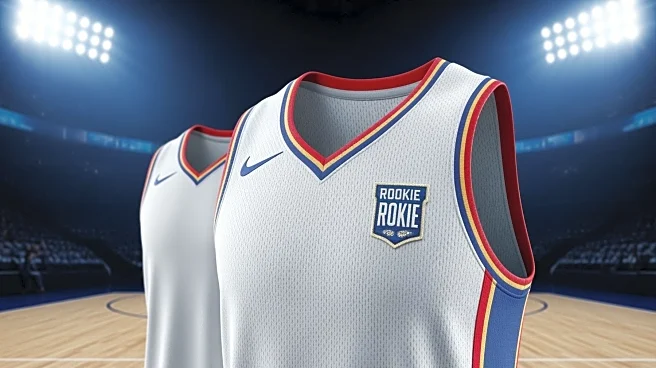What's Happening?
Dallas Mavericks rookie Cooper Flagg made his NBA debut wearing three separate Rookie Debut Patches across different jerseys. In a strategic move by Fanatics-owned Topps, only one of these patches will
be preserved, authenticated, signed by Flagg, and released as a 1-of-1 Rookie Debut Patch Autograph card later this season. This decision aligns with the modern collecting strategy of engineered scarcity, where destruction is used to enhance the uniqueness and value of collectibles. The other two patches were intentionally destroyed to ensure the exclusivity of the surviving patch, which is expected to become a highly sought-after item in the collectibles market.
Why It's Important?
The strategy employed by Topps reflects a broader trend in the luxury and collectibles industries, where scarcity is deliberately engineered to increase value. This approach is similar to practices in the fashion industry, where brands like Louis Vuitton and Burberry destroy unsold products to maintain exclusivity and brand value. By applying this logic to sports collectibles, Topps is elevating the status of sports cards to luxury-grade items, potentially commanding high prices on the secondary market. This move could influence the future of sports memorabilia, encouraging other companies to adopt similar strategies to enhance the desirability and market value of their products.
What's Next?
The release of the 1-of-1 Rookie Debut Patch Autograph card is anticipated to generate significant interest among collectors and investors. As the market for sports cards continues to evolve, the success of this strategy may lead to more companies adopting similar practices to create high-value collectibles. Additionally, the integration of scarcity and narrative into the design of sports memorabilia could further blur the lines between hobby culture and luxury markets, potentially attracting new demographics to the collectibles industry.
Beyond the Headlines
The destruction strategy employed by Topps not only enhances the value of the collectible but also serves as a storytelling device, similar to notable moments in contemporary art and music where destruction has increased value. This approach highlights the cultural shift towards valuing impermanence and exclusivity, reflecting broader societal trends in consumption and ownership. As the collectibles industry continues to intersect with other cultural sectors, the emphasis on scarcity and narrative may redefine the way value is perceived and created.











